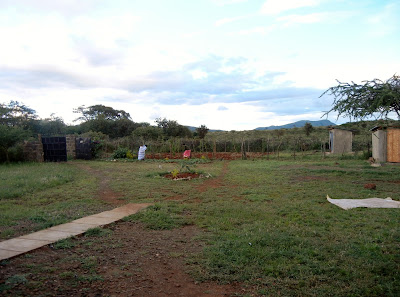They do not fear bad news;
they confidently trust the
Lord to care for them.
Psalm 112:7 New Living Translation
 |
| The Compassion center at Ewauso Kdong. |
As you may know, for the past
eight years, I have sponsored a little lady from India through the organization
Compassion, International. Neela has grown from that little girl into a
beautiful young woman. And because life goes on and sometimes it gets away from
us, my little lady in India is no longer in the program. (This link might answer some of your questions regarding this.)
I got a call Friday night
from Compassion explaining the situation and was asked if I wanted to sponsor a
different child in India. “Well,” I said to the woman on the other end of the
phone, “Can I tell you my story?”
After I rambled for a bit,
the woman asked, “So would you like to sponsor a child in Kenya?”
Ya think?
I knew that this would happen
one day, that I would be asked if I wanted to continue sponsorship and where
would I like this new child to be from? I go on the Compassion website all the
time trying to find kids who might be living in the places I visited in Africa.
How cool would it be for them to walk the same land that I walked? How cool if
Val could find this new child while she is still in Kenya?
God guide me, send me to the child who needs me the
most.
“Um,” I said to the
Compassion woman still holding on the other end, “Give me a girl in Kenya who
has been waiting the longest for a sponsor.”
“I have a little girl – I can’t
pronounce her name, but she is nine years old. Oh, her birthday is July 11. What
a wonderful birthday present for her.”
“That’s perfect,” was all I
could answer because by this time I was crying.
“We will send her profile
within a week. Otherwise if you go to our website, she should be on your
account within 24 hours.”
This was eight o’clock Friday
night. When I checked my Compassion account at six am Saturday morning, there
was my new little girl. Mueni. No, she is not from any place that I have
visited or that Val has visited. According to Google Maps she is a good two and
a half hour drive from Nairobi, which on Kenyan roads is more like five hours.
But that is ok. Just like
Neela from India, Mueni is the child God chose for me. And I will accept His
will.
The Lord will work out his plans for my life— for your
faithful love, O Lord, endures forever.
Don’t abandon me, for you made me.
Psalm 138:8 New Living Translation
And Lord, don’t abandon Neela
or Mueni. Amen
 |
| The Compassion center in Nairobi. |
.JPG)
.JPG)
.JPG)
.JPG)
















.jpg)

















.JPG)



.jpg)








